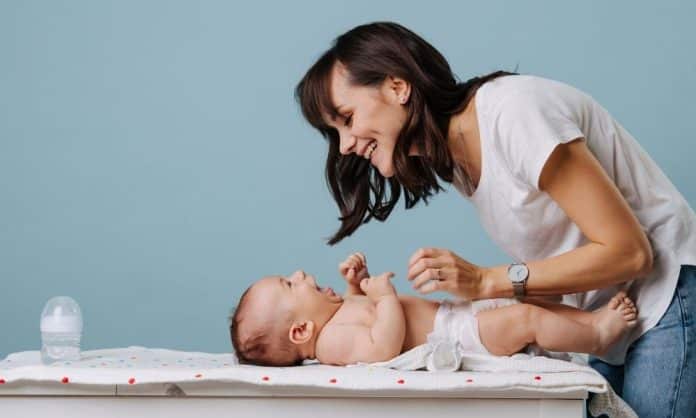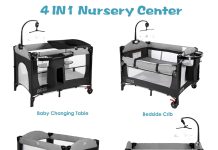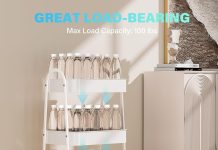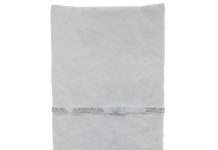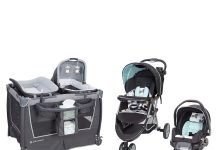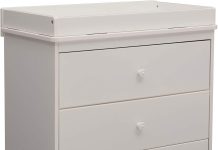When it comes to buying a baby changing table, the safety of our little ones is always our top priority. But with so many options available, it’s important to know exactly what safety features we should be looking for. From sturdy construction to secure straps, this article will guide us through the essential safety features that every parent should consider when choosing a baby changing table. Let’s ensure that every diaper change is not only convenient but also safe and secure for our precious bundle of joy.
Review contents
Sturdy Construction
When it comes to choosing a baby changing table, one of the most important factors to consider is sturdy construction. After all, we want a table that will not only last us through the diaper-changing years but also provide a safe and secure environment for our little one.
A solid and stable base is a crucial feature to look for in a baby changing table. This ensures that the table stays firmly in place while we attend to our baby’s needs. Whether it’s a freestanding table or one that attaches to the wall, a stable base helps prevent any accidental tipping or wobbling, offering us peace of mind.
In addition to a solid base, quality materials are also essential for a strong and durable frame. Opting for tables made from sturdy materials such as solid wood or metal ensures the longevity of the furniture. By investing in a well-built changing table, we can be confident that it will withstand the test of time and multiple diapers changes without compromising safety.
Safety Straps
As any parent knows, babies can be quite squirmy during diaper changes, making it crucial to have secure safety straps in place. Adjustable straps equipped with multiple attachment points ensure that our little one stays in place while we tend to them. These straps provide an added layer of security, preventing any accidental falls or slips during the changing process.
Easy-to-use buckles are another important feature to prioritize when choosing a baby changing table. We want to be able to fasten and release the straps quickly and effortlessly. Look for tables with buckles that are intuitive to use, as it can make diaper changes a breeze, especially during those challenging moments when we need to act swiftly.
This image is property of cdn.shopify.com.
Safety Rails
When it comes to the safety of our little ones, raised sides on a changing table are a must-have feature. These safety rails act as a barrier, preventing our baby from rolling off the table during diaper changes. The height of the safety rails should be sufficient to provide effective containment, offering maximum protection against falls.
In addition to raised sides, padded or contoured edges are an excellent safety feature to consider. These edges provide an extra layer of protection, reducing the risk of our baby accidentally bumping their head or getting injured during fidgety diaper changes. The soft padding or contoured design ensures a comfortable experience for our little one while keeping them safe and secure.
Non-Slip Surface
A non-slip surface is essential when it comes to choosing a baby changing table. Diaper changes can sometimes get messy, and the last thing we want is our baby sliding or slipping during the process. Look for tables with a textured or gripping material on the changing surface to provide traction and prevent any accidental slips.
Furthermore, opting for a water-resistant and easy-to-clean surface is ideal for maintaining a hygienic diaper changing area. Babies can be unpredictable, and spills or accidents are bound to happen. A non-slip surface that is waterproof and easy to wipe clean ensures a sanitary and safe environment for our baby’s sensitive skin.
This image is property of colgatekids.com.
Weight Capacity
When choosing a baby changing table, it’s important to consider the weight capacity it can safely support. Different tables have varying maximum weight limits, and it’s crucial to choose one that can accommodate our baby’s weight as they grow. A table with a suitable weight capacity ensures that it remains stable and secure during diaper changes, even as our baby becomes more active.
Ensuring that the changing table can support our baby’s weight safely is paramount for their well-being. Be sure to check the weight limits specified by the manufacturer and choose a table that meets the needs of our growing child. By selecting a table with a suitable weight capacity, we can have confidence in its ability to provide a safe and comfortable changing experience.
Certification and Compliance
When it comes to our baby’s safety, it’s important to choose a baby changing table that meets the necessary safety standards. Look for tables that are JPMA (Juvenile Products Manufacturers Association) certified. This certification ensures that the product has undergone rigorous testing and meets the highest safety standards in the industry.
In addition to JPMA certification, it’s also crucial to choose a table that is compliant with ASTM (American Society for Testing and Materials) regulations. These regulations ensure that the table meets specific safety requirements and has been tested for its durability and stability. By selecting a table with these certifications and compliance, we can have peace of mind knowing that it has undergone thorough testing to ensure the safety of our baby.
This image is property of images.ctfassets.net.
Built-In Storage
Convenience is key when it comes to changing diapers, and having built-in storage on a baby changing table can be a game-changer. Look for tables that come with convenient shelves or drawers to keep essential items within reach. Having dedicated storage space for diapers, wipes, creams, and other diaper-changing essentials eliminates the need for multiple trips to retrieve supplies, keeping everything organized and accessible.
Not only does built-in storage add convenience, but it also helps prevent clutter and potential hazards. Keeping the changing area tidy and free from unnecessary items reduces the risk of accidents, ensuring a safe environment for our baby. With everything neatly stored within reach, we can focus our attention on our little one without worrying about searching for supplies.
Smooth and Rounded Edges
Safety should always be a top priority, especially when it comes to our baby’s delicate skin. Choosing a baby changing table with smooth and rounded edges eliminates the risk of sharp corners or edges that could cause injuries. With the absence of any sharp points, we can rest assured that our baby’s skin is protected during diaper changes.
Smooth and rounded edges also reduce the risk of unfortunate accidents. Even if our baby were to accidentally bump into the table, the absence of sharp edges minimizes the chances of any significant harm. By selecting a table with this safety feature, we can create a worry-free environment for diaper changes.
This image is property of Amazon.com.
Easy to Clean
Let’s face it, diaper changes can get messy. That’s why choosing a baby changing table with an easy-to-clean surface is a must. Look for tables with a smooth, non-porous surface that resists stains and odors. This makes it easy to wipe away any messes and maintain a clean and hygienic diaper changing area.
A changing table with a surface that is resistant to staining and odors ensures that the table remains clean and fresh, even after several diaper changes. With quick and easy clean-up, we can spend less time worrying about messes and more time focusing on our baby’s needs.
Foldable or Portable Design
For those who have limited space or frequently travel, a foldable or portable baby changing table can be a lifesaver. These tables feature a space-saving design that can be easily folded and stored when not in use. Whether it’s for small apartments or families constantly on the go, a foldable or portable design offers convenience and flexibility.
Locking mechanisms are an important consideration when choosing a foldable or portable changing table. These mechanisms ensure stability when the table is in use, preventing any accidental collapses or accidents. By opting for a table with reliable locking mechanisms, we can provide a safe changing surface for our baby, even in unconventional settings.
In conclusion, when it comes to selecting a baby changing table, the safety of our little ones should always be our top priority. By considering features such as sturdy construction, safety straps, safety rails, non-slip surfaces, weight capacity, certification and compliance, built-in storage, smooth and rounded edges, ease of cleaning, and foldable or portable design, we can make an informed choice that ensures a safe and comfortable changing experience for our baby. Investing in a high-quality changing table with these essential safety features brings peace of mind and allows us to focus on what matters most – our baby’s well-being.
This image is property of images.thdstatic.com.

